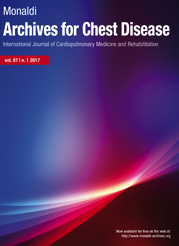Diagnostic yield of rapid on-site cytology evaluation on fluoroscopic-guided transbronchial biopsy in a private hospital in Jakarta: a one-year retrospective study
All claims expressed in this article are solely those of the authors and do not necessarily represent those of their affiliated organizations, or those of the publisher, the editors and the reviewers. Any product that may be evaluated in this article or claim that may be made by its manufacturer is not guaranteed or endorsed by the publisher.
Accepted: 20 January 2025
Authors
Rapid on-site cytology examination (ROSE) with a fluoroscopic-guided transbronchial biopsy (TBLB) involves the immediate evaluation of cytological specimens during a diagnostic procedure. This research aims to investigate the potential yield of this diagnostic technique, shedding light on its benefits, limitations, and the evidence supporting its efficacy. A retrospective analysis of the data was conducted on 26 patients who underwent ROSE and TBLB procedures in the hospital between July 2022 and August 2023. A total of 21 patients met the requirements for the inclusion criteria: patients with peripheral pulmonary lesions found by chest X-rays or chest computed tomography scans consented to have a bronchoscopy with both ROSE and TBLB examination. A total of 5 patients were excluded because of the exclusion criteria: patients who only took either ROSE or TBLB examination and were noncompliance with bronchoscopy. The statistical software SPSS 29.0 was used for the analyses. The chi-square test was employed to evaluate differences between two groups of categorical variables and was considered significant when the p-value was under 0.05. ROSE evaluated 21 lesions and followed up with the final pathological biopsy. Malignant tumors were identified in 12 cases by ROSE and TBLB procedures. One case was benign by the biopsy results but was malignant by ROSE examination. Similarly, 8 cases were benign, as determined by ROSE examination and TBLB. Between ROSE and TBLB, there was a statistical difference with p<0.001. The sensitivity is 100%, and the specificity is 11.1%. However, high sensitivity was proven by ROSE compared to biopsy, which is the gold standard in this study. No significant complications were observed after the procedure. According to this study, ROSE has a high diagnostic value with high sensitivity values for real-time diagnosis but still has not been able to replace the biopsy function as the gold standard. ROSE should only be considered for screening and sample adequacy in the bronchoscopy suite.
Ethics Approval
This retrospective study has been approved by our hospital's institutional ethical review board, which has also waived the need for informed permission in order to collect data from the relevant patients. (Ethics committee approval number: 003/SB/KEP- RSSC/LOLOS UJI ETIK/II/2024, February 13th, 2024).How to Cite

This work is licensed under a Creative Commons Attribution-NonCommercial 4.0 International License.






